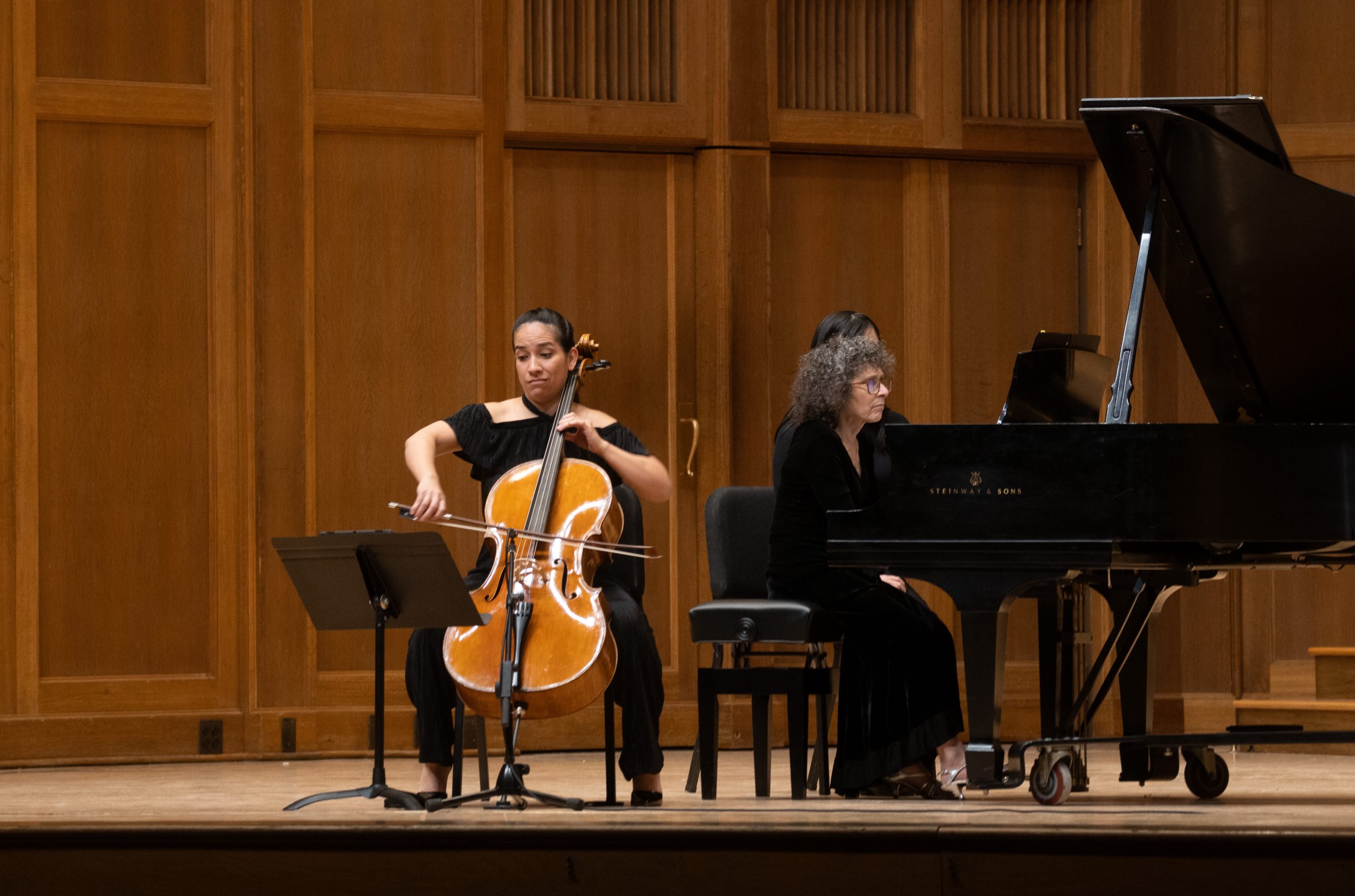Taide Prieto, Visiting Professor of Music, gave a joint recital with Catherine Kautsky, George and Marjorie Olsen Chandler Professor of Music, in the Lawrence Memorial Chapel on Wednesday, Feb. 8. Their program consisted of Impressionist and Contemporary Latin American music for cello and piano.
The first work on their program was “Sonata for Cello and Piano” by Mexican composer Manuel M. Ponce (1882-1948). Prieto explained that Ponce lived in Cuba while writing this piece and he incorporated the Cinquillo Cubano, a syncopated dance rhythm, into the piece in addition to Romantic and Impressionist European influences.
The first movement of the sonata began with a stormy and tumultuous piano entrance with the cinquillo rhythm that Prieto had described. The cello made a graceful and confident melodic entrance as the piano continued this rhythm. The piano and cello then exchanged the cinquillo rhythm and melody parts before moving into a calmer and more lyrical section. The piece continued to alternate between agitated rhythmic sections and more tranquil lyrical ones in which the piano experimented with fluttery textures and ones that sounded like a gently flowing stream as the cello sang delicately above it.
The second movement began with warm cello pizzicato and a steadily flowing piano. As the cello started bowing, the energy started to build, culminating in a set of powerful piano chords. The piece then transitioned into a much slower section, in which the piano painted an idyllic scene while the cello floated above. The movement regained much of its earlier excitement before coming to a majestic ending.
While both of the first two movements were Allegros, the third movement was an Arietta, offering a simpler and more meditative contrast. I imagined myself sitting under a tree by the river on a summer day as the piano created a texture of dappled light and the cello played an unconcerned melody.
The final movement was perhaps the peppiest and most raucous of the sonata. After two exclamatory chords from the piano, the cello plunged in with a determined ambition. The movement had a lighter fugal section in the middle. This was followed by a reflective solo piano section which the cello matched as it joined in. The movement then resumed its original coursing energy as it came to a close.
The next piece on the program was “Preludio for Cello Solo” by Mario Lavista (1943-2021) which was composed in 2019 for the Carlos Prieto International Cello Competition. The piece employed a variety of techniques including natural harmonics and experimented with bowing positions. In particular it used sul ponticello (bowing near the bridge to create a nasal tone) and sul tasto (bowing on the fingerboard to create a soft tone) to give the music a variety of colors.
The piece had a jarring sul ponticello opening but quickly pulled back into a more reserved sound. Use of natural harmonics created an intimate feeling and the piece had a sense of wistfulness throughout. Of the techniques employed, I found the sul ponticello most apparent – at times it created an eerie but captivating effect somewhat like a didgeridoo.

Kautsky again joined Prieto for the third piece on the program, Arturo Márquez’s (b. 1950) “Lejanía Interior (Inner Distance).” It began with a bright but gentle piano intro and the cello joined elegantly. I pictured a swan on a lake as they played. Both instruments started to build in energy, excitement and tension with a sense of daring in the cello especially. After a section with a tender and vulnerable high cello melody, the cello had another showy section before the piece ended solemnly.
The final pieces on the program were José Elizondo’s (b. 1972) “Danzas Latinoamericanas.” The first of these was “Otoño en Buenos Aires (Autumn in Buenos Aires),” which took inspiration from Argentinian Tango. The piece had an air of quiet assuredness with the rhythms giving it momentum. There was also a playfulness throughout and a sense of humor in some moments. The piece ended with a descending glissando in the piano that got some laughs from the audience.
The second dance was “Pan de Azúcar (Sugarloaf Mountain),” named after a mountain in Rio de Janeiro and based on Brazilian Bossa Nova. This piece began with piano alone, introducing a rhythmic motif and a sense of direction for the piece. The cello entered with a lyrical quality and a feeling of sincerity, maintaining the flow established by the piano. At moments in the piece, the cello played two voices in harmony against the piano’s accompaniment while at other times the piano took forefront in singing out the melody.
The final dance was “Atardecer Tapatío (Sunset in Guadalajara),” based on Mexican Jarabe. It began with infectious energy in the piano, irresistible to the cello as it joined in. The instruments seamlessly passed the melody back and forth, contributing to the joyful sense of interaction between them. While listening, there was the feeling of a sunny, cloudless blue sky. The piece ended with a few triumphant chords, making the perfect conclusion to the program.
Prieto and Kautsky’s recital offered a thoroughly enjoyable selection of Latin American music for piano and cello, expressing a vast emotional spectrum from wistfulness to joy while maintaining rhythmic momentum. The contributions of Latin American composers are too often overlooked in classical music, and this program filled in some of those gaps by giving the audience the valuable opportunity to hear this music that we might otherwise be missing out on.

